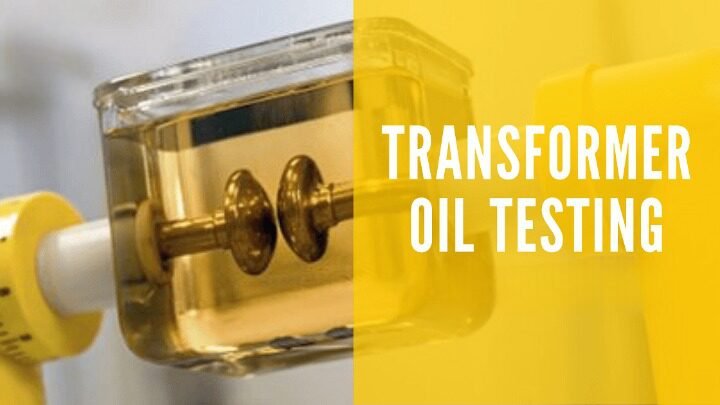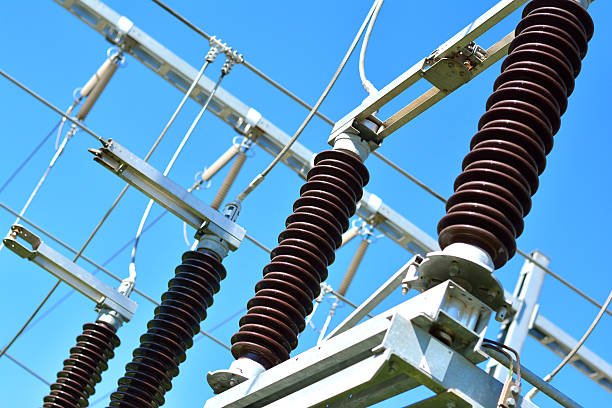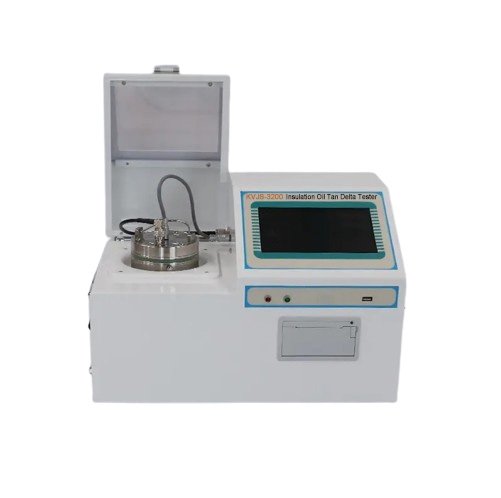Are you unsure about your transformer oil’s health? Worried about sudden failures and costly downtime? Regular Breakdown Voltage (BDV)[^1] testing using an insulation oil tester gives you crucial insights.
BDV testing measures the voltage where insulating oil electrically fails. Following IEC 60156[^2] involves applying increasing voltage across electrodes in an oil sample until an arc occurs, indicating the oil’s breakdown strength.

This test is vital for transformer reliability and a key part of transformer oil analysis. But what exactly is breakdown voltage, and why does it matter so much? Let’s explore this essential aspect of transformer maintenance further.
What is the breakdown voltage of insulating oil?
Confused by technical terms like BDV? Does ‘breakdown voltage’ sound complicated? It’s actually a straightforward measure of your oil’s ability to insulate high voltages inside equipment.
Breakdown voltage (BDV) is the minimum voltage that causes insulating oil to fail and conduct electricity instead of insulating. It shows how well the oil can prevent harmful electrical discharges within your transformer.

Dive Deeper into BDV
Insulating oil in transformers serves two main purposes: cooling the windings and providing electrical insulation between live parts. The breakdown voltage test specifically checks this insulation quality. Think of it as the oil’s breaking point under electrical stress.
According to the IEC 60156 standard, the test involves taking a sample of the transformer oil and placing it in a test cell. This cell contains two specific electrodes (usually mushroom or spherical shaped) set a precise distance apart (typically 2.5 mm). An AC voltage is then applied across these electrodes and steadily increased at a controlled rate (like 2 kV/second).
The voltage continues to rise until an electrical arc, or spark, jumps between the electrodes through the oil. The voltage value at the exact moment this arc occurs is recorded as the breakdown voltage. The test is usually repeated several times (e.g., six times as per IEC 60156) with stirring between tests, and the average value gives the final BDV result.
Several factors heavily influence the BDV:
- Moisture: Even tiny amounts of water drastically reduce BDV.
- Solid Particles: Contaminants like fibers (from insulation paper), dust, or metal particles create weak points.
- Dissolved Gases: Gases, especially if they form bubbles, can lower the breakdown strength.
- Oil Age & Oxidation: As oil degrades over time, byproducts are formed that lower its insulating properties.
A low BDV reading indicates the oil is contaminated and cannot reliably insulate, increasing the risk of partial discharges, flashovers, and potentially catastrophic transformer failure. This makes regular BDV testing a critical part of any preventative maintenance program.
What should be the BDV value of transformer oil?
Have you received BDV test results from your insulation oil tester? Are you unsure if your oil’s BDV value is good or bad? Knowing the standard acceptable levels helps you correctly interpret the results.
Acceptable BDV values depend on the oil type and condition. Following IEC 60156, new treated oil might need >60kV, while treated in-service oil could be acceptable above 30kV-40kV, depending on the transformer’s requirements.

Dive Deeper into Acceptable BDV Values
The required BDV isn’t a single fixed number; it depends on several factors, primarily the condition of the oil and the voltage class of the equipment it’s used in. The IEC 60156 standard provides guidelines, but specific limits are often set based on the transformer manufacturer’s recommendations and the user’s maintenance philosophy.
Here’s a general guide based on common practice and standards like IEC 60156:
| Oil Condition | Typical Minimum BDV (kV) – IEC 60156 | Notes |
|---|---|---|
| New Oil (As Received) | > 30 kV | Oil delivered from the supplier, before any treatment on site. |
| New Oil (Treated) | > 60-70 kV | After purification (drying, filtering, degassing) before filling. |
| In-Service (Good) | > 40-50 kV | Oil inside operating equipment, considered in good condition. |
| In-Service (Fair) | 30-40 kV | Oil shows some contamination, monitor closely or consider treatment. |
| In-Service (Poor) | < 30 kV | Requires immediate investigation and corrective action (purification). |
(Note: These values are illustrative. Always refer to the specific standard version, equipment manuals, and your company’s maintenance procedures.)
Why do these values matter? A transformer operating at high voltage relies heavily on the oil’s insulating ability. If the BDV drops below the acceptable limit for that voltage class, the risk of internal arcing increases significantly. This arcing can damage the transformer’s insulation paper, windings, and core, leading to costly repairs or complete failure. For critical, high-voltage transformers, maintaining a higher BDV is essential for reliability. Consistent transformer oil analysis, including BDV testing, helps track the oil’s condition over time.
What is the dielectric breakdown strength of oil?
Have you come across another technical term? Are you wondering if “dielectric strength” is different from BDV when talking about transformer oil? Don’t worry, they describe the same fundamental property.
Dielectric breakdown strength is the maximum electric field intensity the oil can endure before it fails electrically. For practical oil testing, this property is measured and reported as the breakdown voltage (BDV).

Dive Deeper into Dielectric Strength
While BDV is a voltage (measured in kilovolts, kV), dielectric strength is technically an electric field strength (measured in kV per millimeter, kV/mm, or similar units). The electric field strength depends on both the applied voltage and the distance over which it’s applied. In the context of the BDV test (like IEC 60156), the distance is fixed by the gap between the electrodes (e.g., 2.5 mm).
So, Dielectric Strength = Breakdown Voltage (BDV) / Electrode Gap Distance.
However, in practical terms for liquid insulation like transformer oil, the terms “breakdown voltage” and “dielectric strength” are often used interchangeably. The BDV test directly measures the voltage required to cause breakdown across that standard gap. This voltage reading is the practical value used for assessing oil quality in the field.
The breakdown mechanism involves contaminants. When a high electric field is applied, conductive particles and tiny water droplets suspended in the oil can align themselves, forming a chain or bridge between the electrodes. This bridge creates a path of lower resistance, allowing current to flow suddenly in the form of an arc or spark – this is the electrical breakdown. Purer, drier oil has fewer contaminants, requires a much higher voltage (and thus higher electric field strength) to break down, hence it has a higher BDV or dielectric strength. Using a reliable insulation oil tester is key to getting accurate measurements of this vital property during transformer oil testing.
What is the thermal breakdown of oil?
Have you heard about transformer oil degrading over time? Are you concerned that heat alone can ruin your oil? Understanding thermal breakdown is important, but it’s different from the electrical breakdown measured by BDV.
Thermal breakdown isn’t an electrical event measured directly like BDV. It refers to the slow chemical degradation of oil caused by prolonged exposure to high temperatures, which forms harmful byproducts like sludge, acids, and gases.

Dive Deeper into Thermal Breakdown
Thermal breakdown, or thermal degradation, is a chemical process. Transformer windings generate heat during operation. If the transformer is overloaded, or if its cooling system isn’t working effectively, the oil temperature can rise significantly. High temperatures (especially in the presence of oxygen from air and catalytic metals like copper) accelerate the oil’s natural aging process.
This process involves oxidation and the breaking of hydrocarbon molecule chains within the oil. The results are undesirable byproducts:
- Sludge: Sticky, tar-like deposits that coat windings and clog cooling ducts. This impairs cooling further, leading to even higher temperatures – a vicious cycle.
- Acids: Corrosive organic acids that can attack the transformer’s solid insulation (paper) and metal components.
- Water: Chemical reactions can produce water, further lowering the oil’s BDV.
- Dissolved Gases: Specific gases (like methane, ethane, hydrogen) are produced, depending on the temperature and type of stress.
While thermal breakdown itself isn’t an electrical failure, its consequences severely impact the oil’s electrical insulating properties. The sludge particles, acids, and increased moisture all contribute to lowering the Breakdown Voltage (BDV).
Therefore, BDV testing can show the result of thermal degradation, but it doesn’t directly measure the heat stress itself. Other tests within a comprehensive transformer oil analysis program are better suited for detecting thermal issues. Specifically, dissolved gas analysis (DGA) is excellent for identifying the characteristic gases produced by overheating (thermal faults) and partial discharges or arcing (electrical faults). A complete dissolved gas analysis of transformer oil provides diagnostic information about problems happening inside the transformer, often triggered or worsened by thermal breakdown.
How to improve BDV of transformer oil?
Did your BDV test results come back low? Are you worried about the expense and hassle of replacing the transformer oil entirely? The good news is that often, you can restore oil quality.
You can improve low BDV by removing the contaminants – mainly water and solid particles. This is typically done through oil purification processes like filtration, dehydration (vacuum drying), and sometimes degassing.
Improving BDV
When BDV testing reveals low values, it signals contamination. Instead of immediately replacing the oil, which is costly and requires significant downtime, oil purification (also called treatment or reclamation) is often the first and best option. Here’s how it works:
- Filtration: This process removes solid particles like dust, fibers from insulation paper degradation, and sludge. Specialized oil filtration machines pass the oil through very fine filter elements (often measured in microns). Removing these particles eliminates potential bridging points under electrical stress, thus increasing the BDV.
- Dehydration: Water is a major enemy of insulating oil, drastically reducing its BDV. Dehydration removes dissolved, emulsified, and free water. The most common method is vacuum dehydration. The oil is heated slightly and exposed to a high vacuum, which lowers the boiling point of water, causing it to evaporate from the oil. Dry oil has a significantly higher BDV.
- Degassing: While less critical for BDV improvement than water/particle removal, removing dissolved gases (especially air) is also part of comprehensive oil treatment. Dissolved gases can come out of solution under electrical stress or temperature changes, forming bubbles that are weak points for insulation. Vacuum treatment also effectively removes these gases.
These processes are often combined in a single oil purification plant that circulates the oil from the transformer, through the treatment unit, and back into the transformer, sometimes while the transformer remains energized (online treatment).
At KV Hipot, we understand the importance of confirming the effectiveness of such treatments. That’s why having a reliable insulation oil tester is crucial. You need to perform BDV tests before purification to assess the need, and after purification to verify the transofrmer oil .
[^1]: Understanding BDV is crucial for maintaining transformer reliability and preventing failures. Explore this link for in-depth insights.
[^2]: IEC 60156 provides essential standards for testing transformer oil. Learn more to ensure compliance and safety in your operations.






